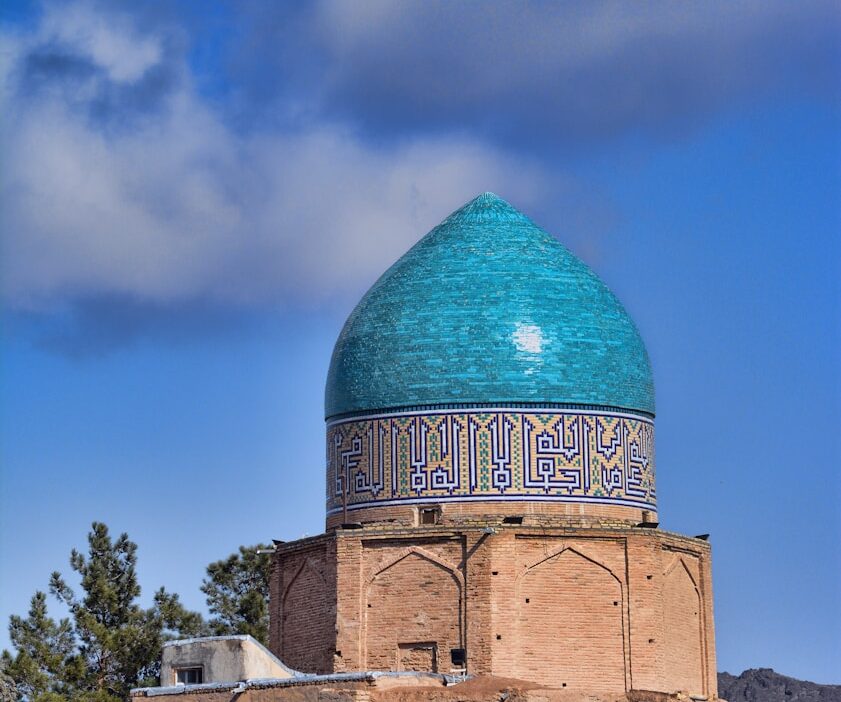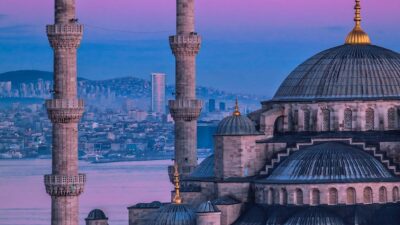After nearly ten days of intense fighting, the conflict between Iran and Israel came to a halt today following a phased ceasefire initiated by U.S. President Donald Trump. What began as a shadow conflict marked by assassinations, cyberattacks, and proxy skirmishes had escalated into open warfare with direct missile exchanges and air strikes before the U.S.-brokered ceasefire took effect.1 To many Muslims, this appears to be a righteous confrontation: Iran, the self-declared vanguard of “resistance,” finally striking back at Israel for its decades of oppression and, most recently, its ongoing holocaust in Gaza.
But this framing is dangerously misleading. While Tehran speaks in the language of resistance, its conduct reveals a calculated ambition: the pursuit of regional dominance cloaked in the rhetoric of Islamic solidarity.
The True Goal: Regional Hegemony
Iran’s conflict with Israel is best understood not as a war for Islam, but as part of a broader, long running struggle to dominate the Middle East. Since the collapse of Saddam Hussein’s regime in 2003, Tehran has steadily expanded its influence across Iraq, Syria, and Lebanon. This campaign—often referred to as the “Shi’a Crescent” is not born of Islamic unity, but of sectarian ambition and strategic self-interest.2
Political scientist Vali Nasr, in Iran’s Grand Strategy: A Political History, explains Iran’s doctrine of “forward defense,” where proxy warfare is used to protect the regime and extend its influence. Tehran’s support for groups such as Hezbollah, the Houthis, and various Iraqi militias is not a moral response to Zionism it is a method of entrenching its presence in fragile states and destabilizing Sunni majority rivals.
A 2016 Carnegie Endowment study underscores this point, revealing how Iran has systematically weaponized sectarian identity to justify its military interventions. It brands Sunni movements as takfiri or Wahhabi extremists, while portraying its Shi’a proxies as “defenders of the oppressed.” In reality, these groups serve as tools of Iranian influence, often exacerbating sectarian divisions rather than resolving them.
The effects have been catastrophic. Iran’s backing of sectarian militias has enabled widespread atrocities, most infamously in Syria, where it has stood firmly behind Bashar al-Assad. His war on the country’s majority-Sunni population has led to the deaths of over 500,000 people, including many Palestinians. Similarly, Iran’s support for repressive actors in Iraq, Yemen, and Lebanon has further marginalized Sunni communities. These policies are not accidental missteps; they are a consistent pattern of tactical sectarianism disguised as resistance.
The Illusion of Islamic Solidarity
Tehran recognizes that military force alone cannot sustain its ambitions. Parallel to its armed campaigns, it wages an ideological offensive—carefully crafting an image of itself as the moral voice of the Muslim world. This is no less strategic than its use of militias and no less deceptive.
This image building finds its strongest expression in Iran’s exploitation of the Palestinian cause. As the holocaust in Gaza continues unabated, Iran positions itself as the only state bold enough to confront Zionist aggression. This posture has earned it admiration across the Muslim world—an admiration rooted in emotion, and not an accurate understanding of Iran’s motives.
The so-called “Axis of Resistance,” comprising Hezbollah in Lebanon, the Houthis in Yemen, and other Iran aligned militias, is presented in Iranian media as a unified Islamic front. In truth, these are sectarian clients embedded in Tehran’s broader plan to consolidate control from Iran to the Mediterranean.
As Nasr outlines, Iran’s foreign policy is driven not by religious sincerity, but by strategic calculation. Its language of resistance is designed to obscure the fact that it is building a sectarian empire. This is an empire that curses revered figures of Islam, including the Prophet’s ﷺ Companions. This hypocrisy undercuts Iran’s claim to Islamic leadership and exposes the political nature of its supposed solidarity.
Conclusion:
Iran’s war with Israel is a regional power struggle, not a sacred cause. It is a fight between two nation states seeking dominance. One is a racist settler colonial state carved out in the blood of the Palestinian people, the other a sectarian Shī‘ī state whose founding clerics openly revile the Prophet’s Companions.
Sources:
- Vali Nasr, Iran’s Grand Strategy: A Political History (2024)
- Carnegie Endowment for International Peace, “Iran’s Sectarian Strategy in the Middle East” (2016)
- Financial Times, “Iran steps out of the shadows as direct confrontation with Israel begins” (June 2025).
- https://islamichistory.info/2024/10/06/iran-israel-and-the-war-against-islam/
Appendix: Khomeni, founder of the Iranian revolution
Any serious inquiry into the ideological foundations of the Republic of Iran must engage with the beliefs of its founding figure, Ayatollah Khomeini. Also see this and this for further information.
Hatred of the Sahaabah
In his work Kashf al-Asrar, Khomeini makes the following claim: “They, Abu Bakr and Umar, had nothing to do with Islam and the Qur’an, except to seize worldly power, and had been using the Qur’an as a smokescreen to fulfill their evil intentions.”
Khomeini’s open takfīr (excommunication) of the Prophet’s most trusted allies and family members is a mainstream Shia view. For instance, Rijāl al-Kashshī, a foundational Shia biographical text, attributes the following statement to Abu Ja‘far: “The people all became apostates after the Prophet’s death except for three: Miqdad ibn Aswad, Abu Dharr, and Salman.”
This worldview — branding the majority of the Prophet’s companions as traitors — underpins Khomeini’s ideology. He lauded scholars like Mullah Baqir al-Majlisi, who in his book Hayat al-Qulub (Vol. 2, p. 870), accuses Aisha and Hafsa of poisoning the Prophet ﷺ
Rejection of the Quran
Central to Twelver Shia theology is the belief that the Qur’an was compiled by individuals they consider apostates thus casting doubt on its authenticity. Although this is seldom admitted openly, it runs deep in classical Shia literature. Khomeini affirmed the legitimacy of works such as Faṣl al-Khiṭāb by Nūrī al-Ṭabarsī, a text that openly accuses the Companions of altering the Qur’an and omitting verses pertaining to Ali. He also praised figures such as al-Kulaynī (al-Kāfī), al-‘Āmilī (al-Wasā’il), and al-Ṭabarsī (al-Iḥtijāj), all of whom are associated with the ‘distortion of the Quran’ narrative.
Al-Kafi, the most important hadith collection in Shia Islam, equivalent to Sahih al-Bukhari for Sunnis, contains over twenty narrations that accuse the early Companions of altering the Qur’anic text. These narrations claim that key references to Ali and the Imams were removed from the Qur’an by political enemies of Ahl al-Bayt, and that only the Shia Imams preserved the true Qur’anic revelations. In addition to this, Shia texts like Basa’ir al-Darajat by al-Saffar al-Qummi and the historical works of al-Ya‘qubi emphasize the idea that the “authentic” Qur’an — which includes explicit mention of the Imams — is not the version known to Muslims today. According to these texts, the real Qur’an is hidden with the “Twelfth Imam,” who is believed by Shia to be in occultation and will reveal it upon his return.
- as of 24 June 2025 ↩︎
- The “Shi’a Crescent” is a geopolitical term used to describe a crescent-shaped region of Middle Eastern countries with significant Shi’a populations or influence, stretching from Iran through Iraq and Syria to Lebanon. It represents Iran’s strategy of linking allied governments and militias to establish strategic depth and regional dominance ↩︎



